SEO Glossary – The Ultimate A-Z Guide to SEO Terminology
Last Updated on September 18, 2023 by Subhash Jain
100+ SEO Terms Every SEO Beginner should know
Many SEO newbies & even start-up SEO agencies struggle to understand SEO-related terms and buzzwords. Unfamiliarity with key SEO terminology drives a huge disadvantage for SEO beginners and less experienced SEO agencies and professionals.
The majority of website owners hire SEO agencies to give a boost to ranking and organic traffic. The knowledge of SEO technical terms used in the proposed SEO package helps them to negotiate and strike a better deal for an SEO package with the SEO agency.
The SEO industry has its own unique set of terminology and abbreviations. Here is A-Z Guide to SEO Terminology:-
Anchor Text
It is a clickable word or the words having a link to a website. The text is hyperlinked to provide contextual information for search engines and text users about the particular website or web page. For example, if you want to send the readers of ‘SEO agency’ to Samyak Online website, you put a link of the Samyak Online website at ‘SEO agency’; here, ‘SEO agency’ will act as the anchor text.

Alt Attribute Text (Alt Text)
Alt text is a hidden HTML code used to define an image for search engines. Improved digital accessibility of an image supports SEO results.
Authority
It is the credibility of a webpage to rank high in search results. A web page authority is scaled based on web page age, traffic trend, backlink profile, content quality, and on-page SEO parameters.
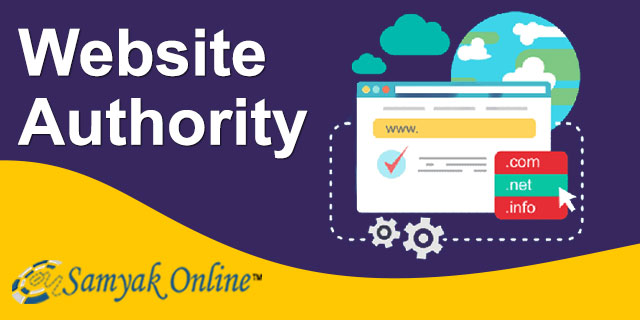
Accelerated Mobile Pages (AMP)
The web component framework is used to increase webpage loading time for mobile site visitors. Browsers take less time for interpreting AMP HTML; therefore, web pages appear faster.
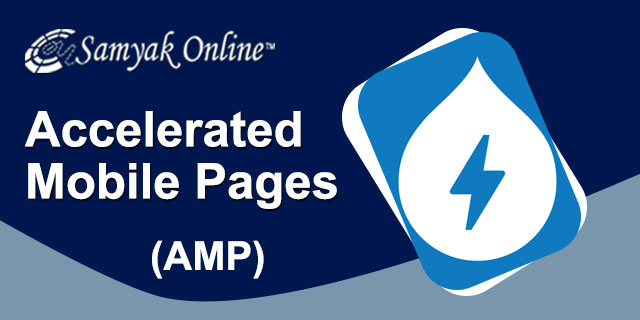
Breadcrumb
The navigational element that indicates the location of the current page to help the users to figure out where they are within a website.
Bots
Search bot also known as spider and crawler crawls the web to create an index. Googlebot (Google’s web crawler) represents a desktop crawler and a mobile crawler.
Black Hat SEO
It is a search engine optimization practice against the guidelines of search engines. Black hat SEO involves unethical promotional activities that may draw penultimate action from search engines.
Bounce Rate
It is the percentage of site visits limited to single-page sessions. The term denotes the engagement quality of a website.
Cache
A cache is a temporary storage of copies of files or data related to a website so that it could be accessed quickly to support the crawling bots to notice and rank the website.
Canonical URL
It is the URL of the best page in duplicate pages. If a web page has two URLs, Google will choose one URL as the Canonical URL.
ccTLD (Country-Code Top-Level Domain)
The top-level domain name used to represent the domain for a specific geographical area or particular country. For example, .in is the ccTLD for India.
Click Bait
It is the text or a link created with overpromising, sensational, misleading headlines to entice web visitors to land on a particular page; so that the publishers could earn revenue.
Dead-End Page
A dead-end page of a website has no outgoing links. The only way to come out of the dead-end page is the back button on the browser. The presence of a dead-end page delivers a 404 error message that is not good for website ranking.
Deep Link Ratio
An internal link pointing to a webpage other than the homepage is called a deep link. The deep link ratio is ratio of internal deep links vs. the links to homepage. Google’s Deep Link Validator tool helps you optimize and validate deep links.
Disavow
It is to inform the search engines to discard the harmful links related to a website. Google’s Disavow Tool is a great help for SEO professionals to disavow the URLs of questionable web pages and domains.
Domain Authority (DA)
It is a score that predicts the likelihood of a website to ranking in SERPs. The domain authority describes the relevance of a website for a specific subject or industry. Domain Authority score, developed by MOZ, ranges from 1 – 100; a higher score means higher likelihood for ranking.
E-A-T (Expertise, Authoritativeness, and Trustworthiness)
It is a quality factor considered by Google to assess whether the content is useful for readers or not. E-A-T is not a ranking factor but it impacts content’s ranking.
Editorial Link
It is the backlink placed at one good website to drive the visitors to another website without any fee/payment involved. Editorial links are SEO effective because these rest at a highly authoritative site.
.edu Links
A link from an education website is called .edu link. The .edu links are the endorsement of your web content to establish the trustworthiness of your business.
Engagement Metrics
The numbers of metrics establish the engagement quality of a website. The key engagement metrics are New vs. returning visitors, conversion rate, bounce rate, CTR, dwell time, stay time on the page, etc.
Featured Snippet
The highlighted text excerpt appears at the top of Google search results to answer a query in short. SEO professionals use different types of featured snippets to improve CTR, credibility, ranking in vocal search queries, etc.
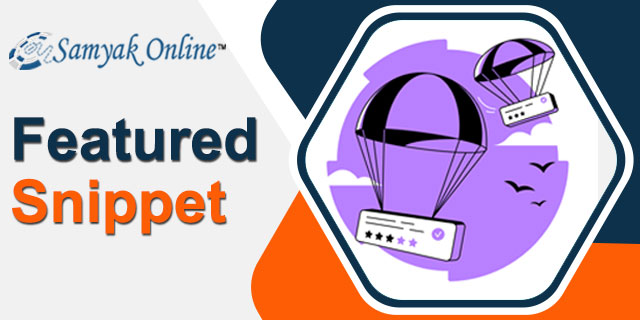
Freshness
The term refers to the age of online content since it was published. The latest/fresh content gets priority in search results. QDF (Query Deserves Freshness) is a part of the Google algorithm.
First Link Priority
Under ‘First Link Priority’, Google ignores all other links after the first link if a web page links to the same page more than once.
Findability
It is a metric that denotes the ease with which the served information can be found by the visitors and search engines. High findability improves traffic, leads, and saves advertising costs.
Google Bomb
It is an artificial improvement of SEO profile in the search index. Google bombing is used for crowd sourcing. Under this “Black Hat SEO” practice, the same Anchor text is used to link a particular web page that is trending high because of sensational or popular relevance.
Google Dance
The term refers to high volatility experienced by a new website or webpage when Google determines the position to index the website/web page. Google Dance becomes important as it denotes that Google is considering your website’s worth for ranking.
Google Sandbox
It is the waiting period for the new websites to get complete benefits of SEO. It often happens when you target highly competitive keywords and the website needs high authority to rank well.
Google Trends
Google Trends, a search feature, gives a real-time picture of the popularity of a search term. Google Trends is an important SEO tool especially for eCommerce SEO to check the popularity of search terms related to a particular item.
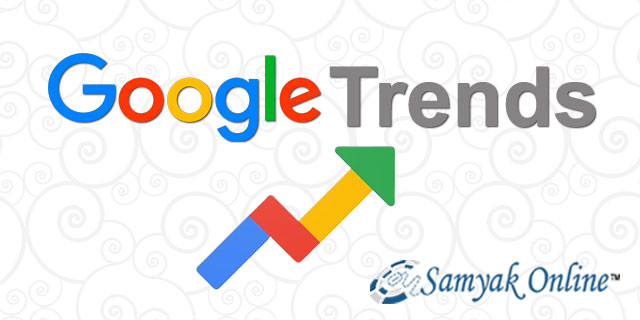
Hummingbird Update
It was rolled out to improve the results of voice searches. It affected semantic search and the knowledge graph heavily. The major purpose of releasing the Hummingbird update was to translate conceptual semantic searches to a reality.
Hidden Text
The text is used to manipulate Google search results. The black-hat SEO practice may draw penalty but there are certain improved ways to use hidden text. Hidden text is designed only for search engines to rank the website better.
HITS Algorithm
Hyperlink-Induced Topic Search update assesses the webpage value not only based on inbound links ((authorities) and content but also based on hubs (outbound links).
.htaccess File
It is a distributed server configuration file. It is used to rewrite and redirect URLs. It allows re-configuring websites without editing server configuration files.
Indexability
It is a metric that denotes the easiness for the Google bot to understand and index a website.
Information Architecture
It shows how a website is organized and where the navigational elements and content are placed on web pages.
Information Retrieval
It is the process of searching the particular information for a query in a large database of text, images, & videos; and, then presenting the most relevant information to the user.
IP Address
The Internet protocol address is a unique identifying number telling about a particular computer network or computer receiving or sending data.
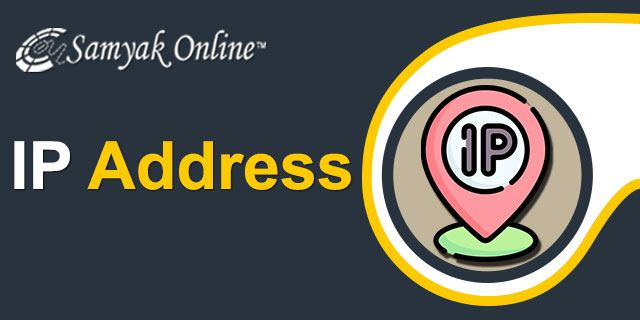
Keyword Prominence
It is an effective SEO practice. SEO experts use the target keyword early in the web page content to inform Google bot promptly about the relevancy of that page for a particular search query.
Keyword Stemming
Google uses keywords stemming to rank the website. It is Google’s ability to understand different forms of a word or keyword. SEO professionals use variations of keywords to qualify better for keyword stemming algorithm.
Knowledge Graph
Knowledge Graph is the collection of interlinked descriptions of entities, relationships, concepts, people, places, and events. Knowledge Graph helps users to find the right thing, get the best relevant information faster, and go deeper into the websites to know more.
Knowledge Panel
Knowledge panels are information boxes. These appear on Google search results when searches are conducted for people, organizations, places, and things available in the Knowledge Graph. Google updates Knowledge panels automatically as it receives edits from verified sources.
Latent Semantic Indexing (LSI)
This analytical method provides statistical co-occurrences of words appearing together. LSI denotes the relationship between concepts and terms. Search engines use LSI Keywords use to understand the context of web content.
Link Bait
It is a practice to create content to attract backlinks. It is a widely used SEO practice to promote web content. The Link Baiting content is shared by unknown people on their digital platforms to get a readership advantage.
Link Equity
Also known as “link juice”, Link Equity is a ranking metric that tells about the authority of a link for multiple pages. Link equity can be scaled for internal links and external links both. Authority, relevancy, following, to be crawled quality, placement, uniqueness, etc are the core values of Link Equity.
Link Velocity:
Link velocity is the speed of adding backlinks to a website in a specific period. It is a scale to measure the growth of the backlink profile. A high link growth rate patent is bad for a website ranking.
Manual Action
It is a penultimate action taken by the Google team against a website that doesn’t comply with Google’s guidelines. The penalized website can either be removed from search results or demoted in ranking.
Meta Tags
It is a short information in the webpage HTML source code to tell the search engines about the relevancy of webpage content about the particular search results queries.
Meta Description
It is the information that is added to the ‘head section’ of an HTML document. It is a short description of a webpage’s content. Meta description content often appears as ‘snippets’ in the search results.
Mobile-First Indexing
Google has started crawling & indexing websites based on the mobile versions of websites instead of the desktop versions. Googlebot uses AdsBot Mobile Web Android and AdsBot Mobile Web crawlers for ranking mobile versions of websites.
Negative SEO
It is a set of SEO spam practices implied to harm other websites. Under this SEO strategy, malicious tactics are used to tarnish the online reputation of competitors’ websites.
Noarchive Tag
Noarchive tag is used to tell Google for not storing a cached copy of a webpage. Use of noarchive tag doesn’t impact search ranking. It can be used as- <meta name=”googlebot” content=”noarchive”> .
Noindex Tag
This tag used to tell Google to not index a web page. The common practice of using Noindex Tag on the pages that are essential for the website but not useful for target buyers improves SEO outcome.
Nofollow Attribute
It is used to tell Google for not following a specific outbound link. Nofollow Attribute tells search engines not to pass authority and link juice of a website to another website that is being linked.
Orphan Page
The web pages not linked to websites anywhere are called orphan pages. Users can’t access these pages without tapping the direct page URL. These pages are indexed rarely. A valuable to users orphan page may bring visitors to a website if the linking issue is fixed.
Organic Search Results
The natural and unpaid listing in a SERP represents organic search results. Organic search results ranked in line with the latest algorithms give the users the best relevant results.
Off-Page SEO
It is the practice of implying website promotional activities out of website. The most used off-page SEO practices are social media marketing, email marketing, content marketing, influencer marketing, offline marketing etc.
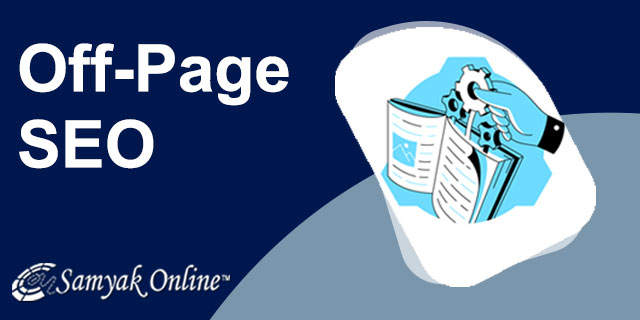
On-Page SEO
It is the practice of implying website promotional activities on the website. Fine tuning the web page technical parameters like HTML code, title tags, meta tags, website architecture, navigation ease, URL structure, etc is the major exercise of on-page SEO.
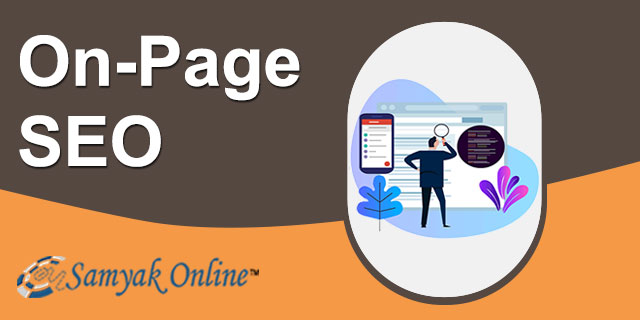
Page Speed
The important ranking factor is the time taken by a web page for complete loading. To get insights for page speed, you can use Google’s free page speed test tool.
Pogo-sticking
It is a practice when searcher visits different search results to find the find the best result relevant to search query. Poor UX, hidden information, clickbait content etc are the major causes for pogo-sticking to occur.
Private Blog Network (PBN)
It is a network of authoritative websites used to create backlinks for a particular website. All the websites pass link equity to target website aimed for ranking improvement.
Persona in SEO
Also known as ‘Buyer Persona’ or ‘Marketing Persona’, it is the fictionalized representation of demographics, behavior, needs, motivations, goals, etc aligned to an ideal buyer. persona-driven SEO improves organic visibility.
QDF
The query deserves freshness (QDF), a mathematical re-ranking function of Google is rolled out to deliver the up-to-date search results. QDF impacts ranking of websites because it determines the period when users need new information. Search results are re-ranked according to the real-time trend of a search term.
Quality Link
It the inbound link originated from a trustworthy, relevant, and authoritative website. These links are created by other websites because these website owners like the information and overall UX of the linked website.
Reciprocal Links
These backlinks are created to facilitate the visitors easily transit between the two websites serving similar or supporting products/services. The primary objective is to serve the useful and complete information to a visitor at least efforts.
Redirect
It is a process of sending visitors and search engines to a different page from the current page. Redirect is used to tell Google Searches that the requested page is available at a new location. Redirects may be permanent or temporary.
Reinclusion
It is SEO practice to tell search engines to include a website for indexing again after it has been de-indexed for problem fixing.
Rich Snippet
Rich snippets in Google search results display additional information about a website like ratings and reviews that are not mentioned in the meta description. Rich snippet, added to HTML, describes structured data markup of a website.
Schema
The semantic vocabulary of tags is added to HTML to assist the search engines read, assessing, and indexing the web pages in search results with better placement.
Scraped content
It is content copied from a legitimate website and posted to another website without any content owner’s permission. The content can be scraped either manually or through software.
Share of Voice
It is a metric to scale the brand visibility and the domination for conversions in trade. The formula to calculate SOV is- (Numbers of particular brand mentions/Total numbers of brand mentions)
Sitelinks
Officially announced in 2006, Google Sitelinks is a set of six links from the same domain that appears below the first search result. Sitelinks save users’ time to find the relevant information on a website; hence, these are helpful to improve user experience.
Taxonomy (URL Taxonomy)
It is a practice of naming, describing, and classifying the website structure and content to help the users for easy navigation to find the most relevant information. URL taxonomy helps search engine bots to assess the relevancy of a website to a search query faster.
Time on Page(ToP)
It is the time a visitor spends on a particular web page. Google Analytics helps to monitor this metric. High ‘Time on Page’ means the good performance of the website.
TrustRank
This Google algorithm measures various “trust signals” to keep valuable web pages away from spam content. The higher TrustRank drives a higher website ranking.
Title Tag
This HTML meta tag acts as the webpage title. Title tag content of max. length of 65 words is used by search engines while displaying search listings.
User-Generated Content (UGC)
It is the content created by the users of the website. UGC is delivered in various forms like blog posts, videos, reviews, comments, etc.
Unnatural Link
The links identified as deceptive, manipulative, or suspicious are called unnatural links. The use of unnatural links in any form may draw manual action.
URL Parameter
These are values added to a URL to identify the traffic source. URL Parameter shows which link was used by the visitor to land at your website.
User-Agent
Using a User-Agent string (UA) helps you identify the used browser, its version, and operating system. UA string is placed in HTTP headers. UA helps to customize content or website behavior for specific versions of browsers.
Vertical Search
These are specific searches aimed at a particular niche like video, shopping, travel, business reviews, etc; for example, Google Maps, Google Product Search, Google Images, Google Blog Search, Google News, etc.
Visibility
It is a metric to scale the appearance of a website in organic search results when the target audience is searching for the best source for the related products or services. Based on CTR, it is directly related to the success of SEO.
Voice Search
These are searches conducted over mobile devices through voice assistant instead of typing. The difference between the words used in natural speaking and typing for a search makes voice search optimization a must for a website to rank higher.
Webspam
Any method used to manipulate or deceive ranking algorithms and/or users comes under webspam tactics. More in used webspam practices are keyword stuffing, excessive links, cloaking thin content, etc.
White Hat SEO
The process of implying SEO practices planned in line with the latest guidelines of search engines.
XML Sitemap
Extensible Markup Language is used by search engines to interpret website data. It doesn’t have predefined tags. XML sitemap contains the website’s important pages to make sure that Google could find and crawl all of them.
It is not the end of the SEO terminology glossary; keep exploring the updates in this A to Z list of SEO terminology.
Inbound Links
Inbound links, also known as incoming or backlinks, are hyperlinks on external websites that direct users to your website. They play a vital role in search engine optimization (SEO), as search engines consider them as endorsements of your site’s credibility and relevance. Inbound links help increase organic traffic and improve your website’s visibility in search engine rankings.
External links
External links, also called outbound or outgoing links, are hyperlinks on your website that direct users to other external websites. They provide additional resources, references, or related content to your visitors. External links can improve the user experience by offering more information and diversifying perspectives. They also contribute to building relationships with other websites.
Linking Domains
Linking domains refer to the unique domains that contain one or more links pointing to a specific website. They play a crucial role in search engine optimization (SEO) as search engines consider the quantity, quality, and relevance of linking domains when determining a website’s authority and ranking. Having a diverse and authoritative portfolio of linking domains can significantly impact a website’s visibility and organic search traffic.
Schema Markup
Schema markup, also known as structured data, is a standardized format that helps search engines better understand and interpret the content on web pages. It involves adding specific code or tags to HTML to provide additional context and meaning to the information presented. By implementing schema markup, websites can enhance their search engine visibility, increase click-through rates, and potentially appear in rich snippets or featured snippets on search engine results pages. Schema markup can be used to mark up various types of content, including products, reviews, events, recipes, and more.
User Experience (UX)
User Experience (UX) refers to the overall experience that a user has while interacting with a website, application, or digital product. It encompasses various factors, including usability, accessibility, visual design, interactivity, and overall satisfaction. The goal of UX design is to create a positive and seamless user journey, ensuring that users can easily navigate, understand, and accomplish their goals within the digital environment. By focusing on UX, organizations can improve customer satisfaction, engagement, and loyalty, leading to better business outcomes.
User Interface (UI)
User Interface (UI) refers to the visual elements and interactive components that users interact with on a website or application. It includes buttons, menus, forms, and layouts, aiming to enhance usability, guide user actions, and provide a visually appealing and intuitive experience.
Click Depth
Click depth refers to the number of clicks it takes for a user to reach a specific page on a website from the homepage. A shallow click depth indicates a more accessible and user-friendly website structure.
Co-Citation
Co-citation refers to the occurrence of two or more websites being mentioned or cited together on other web pages. It is a concept in search engine optimization (SEO) that suggests a relationship or connection between the websites, even if they are not directly linked. Co-citation can contribute to improving a website’s authority and relevance in search engine rankings, as search engines interpret these mentions as a measure of the site’s popularity and credibility within a specific topic or industry.
Code To Text Ratio
Code to text ratio refers to the proportion of HTML code compared to the actual text content on a web page. It is often used as a metric to evaluate the quality and optimization of a website. A higher code to text ratio indicates a larger amount of HTML markup relative to the visible text, which can negatively impact the page’s loading speed and search engine optimization. It is generally recommended to have a higher text to code ratio for better user experience and improved search engine rankings.
Core Web Vitals
Core Web Vitals are a set of essential metrics used to measure and evaluate the overall user experience of a website. They include factors like page loading speed, interactivity, and visual stability. Optimizing for Core Web Vitals helps ensure that websites are fast, responsive, and provide a seamless user experience.
- Largest Contentful Paint (LCP): It is a Core Web Vitals metric that measures the loading speed of the largest content element on a webpage. It indicates when the main content becomes visible to the user. A fast LCP time is important for providing a positive user experience and reducing bounce rates. Optimizing LCP involves improving server response times, optimizing images and videos, and prioritizing the loading of critical content.
- First Input Delay (FID): It is a Core Web Vitals metric that measures the interactivity of a webpage. It assesses the time delay between a user’s first interaction (such as clicking a button or selecting a menu) and the website’s response to that interaction. FID is crucial for evaluating how quickly a webpage becomes interactive and responsive to user actions. A low FID indicates a more user-friendly experience, while a high FID can result in user frustration. Optimizing FID involves minimizing JavaScript execution time and optimizing page responsiveness to ensure a smooth and interactive user experience.
- Cumulative Layout Shift (CLS): It is a Core Web Vitals metric that measures the visual stability of a webpage during the loading process. It quantifies the amount of unexpected layout shifts that occur as content loads. CLS is important because it affects user experience, as unexpected shifts can lead to accidental clicks or difficulty in reading content. Optimizing CLS involves ensuring that elements on the page have predefined sizes, using aspect ratios for media content, and loading and reserving space for dynamic content to minimize layout shifts and provide a smoother visual experience.
Crawl Budget
Crawl budget refers to the number of web pages or URLs that search engines allocate for crawling and indexing within a given time frame for a particular website.
Crawl Error
Crawl errors occur when search engine crawlers encounter issues while accessing and indexing web pages on a website. These errors can include broken links, server errors, or pages blocked from crawling, which can negatively impact a site’s visibility in search engine results.
Crawling
Crawling is the process by which search engines systematically discover and explore web pages on the internet. Through crawling, search engines gather information about websites, index their content, and determine their relevance for search engine result rankings.
Customer Journey
The customer journey refers to the complete process that a customer goes through when interacting with a business, from the initial awareness stage to the final purchase and post-purchase stages. It encompasses all touchpoints and interactions, both online and offline, that shape the customer’s overall experience. Understanding the customer journey helps businesses identify pain points, improve engagement, and optimize marketing strategies to deliver a seamless and satisfying customer experience.
De-index
De-indexing refers to the removal of web pages or an entire website from a search engine’s index. This can occur due to various reasons such as violating search engine guidelines, penalties, or intentional removal by website owners. De-indexing results in the affected pages no longer appearing in search engine results.
Direct Traffic
Direct traffic refers to website visits that originate from users directly typing the website’s URL into their browser or using bookmarks. It represents users who are already aware of the website and directly access it without referral from other sources.
Doorway Page
A doorway page is a web page created solely to rank high in search engine results, often with minimal content. It’s designed to redirect users to another page, manipulating search rankings. Doorway pages are considered a deceptive SEO tactic and violate search engine guidelines.
DuckDuckGo
DuckDuckGo is a privacy-focused search engine that prioritizes user anonymity by avoiding personalized search results and tracking user activity. It provides an alternative to mainstream search engines while emphasizing privacy protection.
Bing
Bing is a search engine operated by Microsoft. It provides users with a platform to search for web pages, images, videos, and other types of online content. Bing aims to deliver relevant search results and offers features like image and video search, maps, and news.
Duplicate content
Duplicate content refers to blocks of text or entire web pages that appear in multiple locations across the internet. It can arise from intentional or unintentional duplication and can negatively affect search engine rankings, as search engines prefer unique and original content.
Dwell Time
Dwell time refers to the length of time a user spends on a webpage after clicking on a search result before returning to the search results page. It is considered an indicator of user engagement and the relevance of the content to the user’s search query. A longer dwell time is often associated with higher user satisfaction and can potentially positively impact search engine rankings.
Entities
Entities refer to distinct and specific objects, people, places, or concepts that are recognized and understood by search engines. They help search engines provide more relevant and accurate search results by understanding the context and relationship between different entities mentioned in web content.
Footer Link
Footer links are navigational links placed at the bottom of a webpage. They typically provide quick access to important pages, such as contact information, privacy policies, terms of use, or site maps, enhancing user navigation and website usability.
About Author: Subhash Jain is the Founder of Samyak Online – the top SEO Agency in India. Are you looking for SEO services to increase your website traffic, leads and conversion? Contact us for Free SEO Proposal.
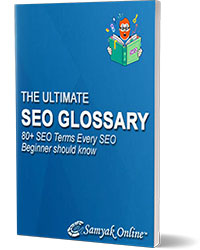
Download Free SEO Glossary eBook – The Ultimate A-Z Guide to SEO Terminology

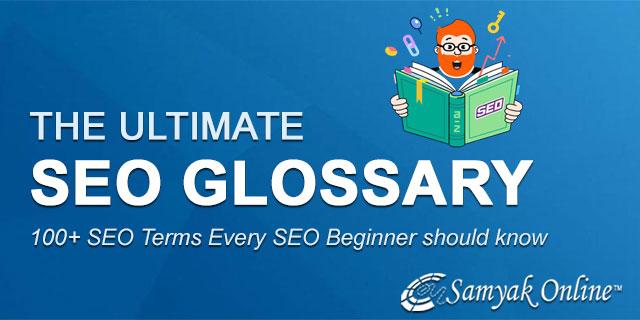
Leave a Reply
Want to join the discussion?Feel free to contribute!